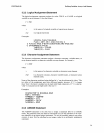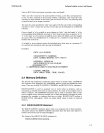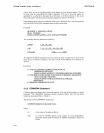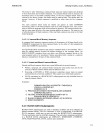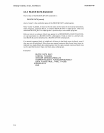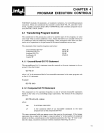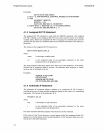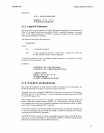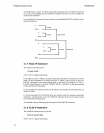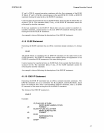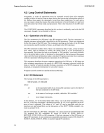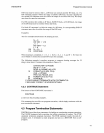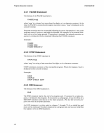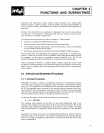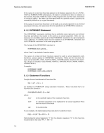
FORTRAN-SO
Program
Execution Controls
Examples:
IF(A
+
8)1010,1020,1030
SWITCH =
A**2
-
8**2
IF (SWITCH) 100,200,300
4.1.5 Logical I F Statement
We have given several examples
of
logical
IF
statements already in this manual. In
effect, if the logical expression evaluated
is
TRUE,
a specified statement
is
executed
next.
If
the
logical expression
is
FALSE, execution continues with the statement
following the logical
IF
statement.
The
format
of
the logical
IF
statement
is
IF (exp)
stmt
where
exp
is
a logical expression
stmt
is
any executable statement except DO, a block IF,
ELSE
IF,
ELSE,
END
IF,
END,
or
other
logical
IF
A function reference in the controlling logical expression
is
permitted
to
affect
parameters in the statement
'stmt.'
Examples:
IF (SWITCH .EO.
1)
GO TO FINISH
IF (SWITCH
.NE.
1)
WRITE (6,20) TOTALS
LOGICAL DONE
DONE
=
(A
*
*2
.GT.
8**2)
IF (DONE) PAUSE
IF (.NOT. DONE) GO TO START
4.1.6 IF, ELSE IF, and ELSE Blocks
The block IF statement
is
used with the
END
IF
statement
and,
optionally, the
ELSE
IF
and
ELSE
statements
to
control
program
execution.
Together with
other
executable
FORTRAN
statements, they can form
'IF
blocks,'
'ELSE
IF
blocks,'
or
'ELSE
blocks,'
the first statements
of
which must be IF, ELSE
IF,
or
ELSE, respectively.
These blocks may be
'nested.'
For
example,
an
IF block may contain
another
IF
block, which may contain
another
IF
block, etc. These blocks may also be empty.
For
example, there may be no executable statements at all between a block
IF
state-
ment
and
its corresponding
END
IF
statement.
An
IF block consists
of
all the executable statements
after
the block
IF
statement up
to, but
not
including, the next ELSE IF, ELSE,
or
END
IF
statement on the same
nesting level as the block
IF
statement.
An
ELSE
IF
block consists
of
all the executable statements
after
the
ELSE
IF
state-
ment
up to,
but
not
including, the nest
ELSE
IF,
ELSE,
or
END
IF
statement
that
has the same nesting level as the
ELSE
IF
statement.
4-3



